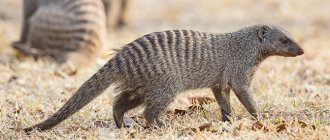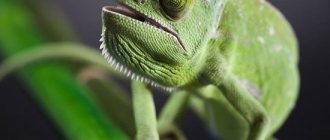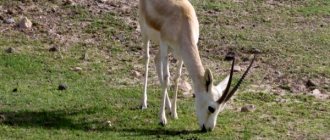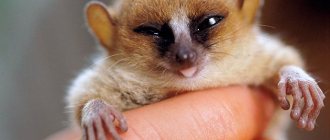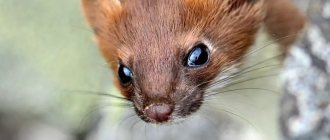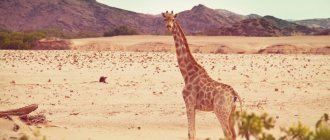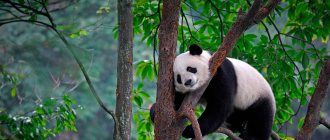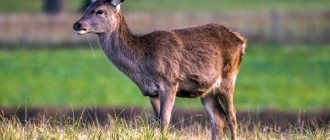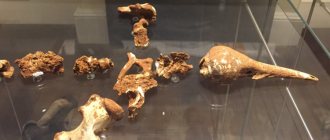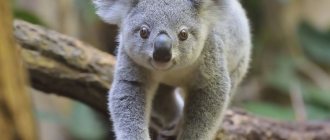Probably everyone knows a fairy tale or cartoon about the brave little mongoose Riki-Tiki-Tavi, who lives near people and hunts poisonous snakes. This fairy tale leads many to think, why not envy such a good and interesting animal at home.
In many African countries, the mongoose is a pet, like a cat or a dog. Often a striped or yellow mongoose becomes a pet.
But before you get such an exotic animal at home, you should evaluate the pros and cons of such an idea.
Habitat
In modern times, the mongoose's habitat covers some areas of Africa, Asia and South-Western Europe.
Since ancient times, he has chosen the east of the Arabian Peninsula as his place of residence. The animal is also found in the territories of countries such as Iran, Afghanistan, and Pakistan.
Their acclimatization quickly took place in India (Jamaica) and Hawaii. The animal was even brought to Italy.
All this was done so that he, being an excellent hunter, would exterminate snakes and rodents. However, there the mongooses multiplied greatly and began to destroy animals that benefit people.
Domestic small animals have also been attacked more than once by these agile predators. Such circumstances led to a ban on the import of mongooses into the territory of many countries, but this did not prevent the remaining animals from continuing to reproduce.
They easily adapt to different conditions: animals can settle in a semi-desert with an overgrown carpet of shrubs, or in humid tropical forests, where herbaceous plants will reliably hide them from prying eyes.
Mongooses dig holes in the sand or build homes at the roots of trees. Some species live in low hollows
Where does he live?
The mongoose's habitat is mainly in the regions of Asia and Africa, although there are European individuals that are found in Southern Europe. The ideal living conditions for animals are: humid jungles, savannas, sea coasts, wooded mountains, deserts and semi-deserts, cities. They can adapt sewers, rock crevices, ditches, and hollows into their homes. Most individuals lead a terrestrial lifestyle, and only African and ring-tailed mongooses live in trees. You can find the mongoose's home underground, where it creates multi-corridor tunnels. Nomadic individuals change their home twice a year.
Characteristic
The very extensive mongoose family includes as many as 35 species, grouped into 14 genera. The most famous of them are the following individuals.
- The common mongoose or Indian mungo (Herpestes edwardsii) has light gray fur interspersed with silver. The animal’s habitat is Africa, Asia (West Indies, Burma) and the southwestern part of Europe (Italy).
- Javan mongoose (Herpestes javanicus) is gray or golden brown in color. It is found from northern India to southern China. Distributed on the islands of Java, Borneo, Sumatra.
- Striped mongoose or mungo (Mungos mungo) - it is also called zebra. It comes in both whitish and brown colors. The animal’s homeland is southern and central Africa (Gambia).
- Yellow or fox-shaped mongoose (Cynictis penicillata) - has a color that depends on the distribution area of the animal. Individuals living closer to the south are endowed with reddish fur mixed with yellow, while those living to the north are yellow-gray. Their homeland is South Africa.
- Dwarf mongoose (Helogale parvula) – has a gray or brown color. Among them there are completely black individuals. Found in Southern and Eastern Africa.
Interesting! Regardless of what a mongoose looks like and what species it belongs to, when in danger it always makes sounds similar to a loud growl, sneezing and even purring.
This animal prefers to build its home near any source of fresh water.
Economic significance for humans: Negative
Yellow mongooses are one of the main carriers of rabies in South Africa. The geographic distribution of this disease corresponds to the range of the fox-faced mongoose. The high incidence of rabies among these mongooses is explained by their high numbers and habit of living in burrows. Burrows bring individuals together in close proximity, thereby increasing the likelihood of virus transmission. There is a high correlation between the rabies outbreak and the breeding season of the yellow mongoose. Many farmers believe that the yellow mongoose is harmful to livestock. Various attempts have been made to reduce the number of potential carriers of rabies.
Appearance
Some people don't have a clear idea of what a mongoose looks like. The weight of an adult varies between 1.5-6 kg.
It is worth noting that there are many different species that differ in terms of color and body structure. Most often, their fur is a solid gray or brownish color.
However, there are species that have yellowish-brown, gray-greenish and light silver colors. Individuals, and sometimes even young, have a pattern of rings on their tail.
Some animals have stripes of varying sizes all over their bodies. Mongoose fur can be soft or hard, long or short. Its structure and length make it possible to determine the type of animal.
The animal's head is small, and its muzzle has a pointed shape. The predator's ears are also small, rounded and almost invisible. The body of the animal is elongated and moderately thin.
It ends in a long and fluffy tail, which is larger than the mongoose itself. The short legs of the animal are often painted in dark colors.
Interesting! The mongoose is often called the "pharaoh's rat." The fact is that these animals were considered sacred by the ancient Egyptians. They were embalmed and buried with full honors.
The mongoose's eye has a very unusual pupil - horizontal. This makes his gaze cunning and insightful
What a mongoose looks like: description and photo of the animal
Mongooses are small predators. They have a slender elongated body, a small head and a long tail. The length of their body without a tail ranges from 16 to 71 cm.
The animal's tail is cone-shaped (thick at the base and tapering towards the end), 19-47 cm long. As a rule, the mongoose's tail makes up two-thirds of the length of its body.
Striped mongoose. Photo credit: Joachim Huber, CC BY-SA 2.0
The animals weigh from 210 g to 7 kg (rarely up to 9 kg). Asian species are usually larger than African ones.
The smallest in the family is the dwarf mongoose (Helogale parvula), with a body of 16-23 cm, a tail of 14-19 cm, and a weight of 210 to 420 g.
The heaviest is the Egyptian mongoose, or ichneumon (Herpestes ichneumon). An adult ichneumon weighs 7-9 kg.
The crab-eating mongoose (Herpestes urva) is the longest in the family. Its size including the tail reaches 85 cm.
But the white-tailed mongoose (Ichneumia albicauda) is considered the largest: its body length with head is 47-71 cm, tail length - 35.5-47 cm, shoulder height - about 25 cm, weight reaches 1.8-5.2 kg .
Dwarf mongoose. Photo credit: Bernard DUPONT, CC BY-SA 2.0
Egyptian mongoose (ichneumon). Photo by: Anna Liflyand, CC BY-SA 3.0
Crabeater mongoose. Photo credit: Rohit Naniwadekar, CC BY-SA 4.0
White-tailed mongoose. Photo credit: MCSchaeffer, CC BY-SA 3.0
The mongoose's muzzle is small, elongated, its ears are small and rounded.
The eyes of animals are light honey with horizontal, narrow, less often round pupils. The horizontal shape of the pupils is characteristic of herbivorous animals.
Representatives of this family can have from 32 to 40 teeth, their number depends on the species.
Yellow mongoose. Photo credit: Tony Hisgett, CC BY 2.0
Meerkat. Photo credit: Bernard DUPONT, CC BY-SA 2.0
The animal's legs are short, five-fingered, with non-retractable, long, slightly curved and blunt claws. With the help of its claws, the mongoose digs underground passages, defends itself from enemies, and occasionally can climb trees.
All mongooses walk on their toes (digitate), the membrane between which is reduced or absent. Most mongooses stand on their hind legs like gophers and straighten their backs completely for a better view.
Skeleton of a meerkat. Photo credit: Chris Dodds, CC BY-SA 2.0
The mongoose's fur is rough, consisting of fluff and hard, long hair. Often it is colored gray or brown, less often it is brown, yellowish, black or red.
In addition, it can be plain, striped, gray or speckled. There are individuals with ring patterns on the tail. The stripes are usually located on the shoulders.
Striped mongoose fur. Photo credit: 4028mdk09, CC BY-SA 3.0
The color of the body often differs from the color of the limbs, tail or its tip. Thus, two species of Madagascar mongooses have longitudinal stripes on their backs, and the third has a striped tail. The striped mongoose (Herpestes vitticollis), as its name suggests, has dark transverse lines on its back.
Intraspecific color variations are possible. For example, the slender mongoose (Galerella sanguinea) is usually gray or yellow-brown, but in the Kalahari Desert it is red in color, and there are also black individuals. In India, on the islands of Java and Sumatra, there lives a dwarf mongoose with black fur with small yellow spots.
Meerkat. Photo credit: Roland Fischer, Zürich (Switzerland), CC BY-SA 3.0
Mongooses, unlike civets, have anal rather than prianal scent glands. In many species they are a large sac with at least two holes. Males and females leave scent marks from their anal and cheek glands.
Best articles: The problem of the impact of energy on the environment
Animals have excellent vision, smell and hearing. The water mongoose (Atilax paludinosus) also has a perfectly developed sense of touch. The animals’ excellent reaction makes it easy to control their strong, flexible body and make lightning-fast throws.
Mongooses are very “chatty”; they make various sounds: squealing, growling, cackling, barking, purring, and abrupt high-pitched cries. Each of them has its own meaning. With sounds similar to cackling, the mongoose warns the attacker: “don’t touch me, it will be worse,” an almost dog-like bark is a general alarm signal, and abrupt, high-pitched cries are the call signs for lagging cubs.
Scientists from Switzerland have found that the “talk” of striped mongooses (Herpestes vitticollis) is very similar to the language of humans in their formation. Their “speech” contains vowels and consonants, and their combination carries a certain meaning. The first they pronounce is a consonant sound, which serves to identify who is speaking, the second is a vowel sound, conveying vital information to their relatives.
Meerkat. Photo by: Fir0002, GFDL 1.2
Key Features
Nimble mongooses are mainly diurnal and sleep at night, however, here everything again depends on the species.
The animal’s hole is invisible to surrounding eyes, since it always tries to disguise the entrance there. Animals usually hunt within their home (within a radius of up to 1 km). They have the following qualities important for a predator:
- sharp eyesight and a keen sense of smell, but as for hearing, the animal’s hearing is weak by nature, but this does not prevent it from hunting;
- fantastic speed, as well as resourcefulness (their reaction speed is one of the highest in the animal world);
- a special strategy for conducting a battle (no matter who is in front of him - the enemy or the victim - the mongoose discourages everyone with its sharp attacks);
- thick and dense fur, which can protect the animal’s body from snake bites (in particular, cobras);
- long and sharp claws and teeth capable of causing serious injury or damage to the enemy;
- the ability to emit a sharp unpleasant odor emanating from special glands at the anus, which often saves animals from danger.
Interesting! The natural agility, as well as the extraordinary maneuverability of these animals, led the Russian armed forces to the idea of creating a high-speed boat, called the Mongoose. It first appeared in 2000.
A cunning animal often waits for its stronger victim to finally exhaust all its strength to attack. After that, he himself goes on the attack.
Productivity
Cattle breeders raise black Scottish cows only for meat - that very valuable marbled beef. What you need to know about Angus productivity:
- The carcass yields 60% pure meat - this is extremely high productivity.
- The female weighs on average 500-600 kg, and if she is fattened purposefully - 700 kg.
- Bulls reach 1000 kg. They are slaughtered at a young age - while the meat is soft and tender. The ideal age for slaughter is 1.5-2 years.
- Over six months, the calf gains weight 152-158 kg - from 22-28 (calf weight) to 180 kg.
Angus are the clear leaders in early maturity and meat characteristics among beef cattle. The weight of cows depending on age is presented in Table 2.
table 2
| Periods of life | Floor | Weight, kg |
| at birth | chicks | up to 20 |
| bulls | until 23 | |
| 7-8 months | chicks | 160-180 |
| bulls | 180-200 | |
| 16 months | fattening bulls | 450-460 |
| adult | cows | 500-700 |
| bulls | 750-1000 |
Being on suckling for up to 8 months, calves gain 800-900 g per day. And one cow produces 1600-2000 liters of milk during lactation. Typically, lactating cows are not milked - the milk is used to feed the calf. After 8 months of the dairy kitchen, the calf will weigh about 230 kg.
Nutrition
All mongooses are divided into groups (20-25 individuals each). Usually they build themselves one common dwelling, which can have several entrances.
Members of the same group recognize each other by a special smell. Vocal contact is carried out between them through whistling, shouting and other sounds.
The animal's diet includes:
- fruits and berries (they can eat both animal and plant foods, collecting);
- insects, as well as their larvae (animals find them by examining grass hummocks and piles of fallen leaves);
- small reptiles and amphibians (there is even a special type of mongoose that feeds on crabs);
- chicks and bird eggs (the animal got used to breaking their shells on nearby stones);
- large reptiles (sometimes these are snakes, which mongooses hunt in flocks and less often alone, which can be seen in the photo below).
While some members of the group are feeding, a couple of others are sure to monitor their surroundings. When an enemy appears, they inform the others about it.
Mongooses' enemies are jackals, snakes and birds of prey.
Having heard a signal notifying of an impending threat, the animals instantly disappear into shelters: between the roots of trees, in rock crevices or minks dug specially for such an occasion.
Interesting! Mongooses brought to America by humans were not agile enough to cope with the rattlesnakes that plagued local farmers. In terms of reaction, reptiles acted faster than small predators.
Mongooses try not to attack king cobras, however, if a fight does take place, they will fight to the last
Interesting facts about mongooses
- Only the mongoose that kills the snake has the right to eat it. The rest of the family does not try to take away the spoils.
- A fight between a mongoose and a cobra may not end in the beast's favor. A bitten mongoose dies from cobra venom faster than a human.
- Some species of mongoose have different numbers of chromosomes in the genotype of males and females.
- In Central India, mongooses are considered sacred (totem) animals. They are a symbol of consistency and speed. There is also a year of the Mongoose in the Indian calendar.
- The Mongoose family, along with Hyenas (lat. Hyaenidae), is one of the youngest in the order of Carnivores.
- At 3-4 months, each mongoose baby is assigned a guardian who teaches it to hunt and monitors it.
- The prototype of the famous Rikki-Tikki-Tavi was probably the Indian gray mungo (also known as the common mongoose) (lat. Herpestes edwardsii). It is he who, thanks to his reaction, easily copes with the king cobra.
- The hero of the Disney cartoon “The Lion King,” the meerkat Timon, has the surname Berkowitz (in the original – Timon Berkowitz).
- In youth vocabulary, the expression “mongoose reaction” is applied to reckless, senseless and unsuccessful actions. But in sports this animal is valued as exceptionally fast and cunning. The Golden Mongoose Award is awarded to outstanding athletes of Ukraine.
- A.P. Chekhov had a tame mongoose named Bastard. He leafed through the pages of the book, dipped his paws in ink, looked through the pockets of guests and loved people very much.
Video
https://youtube.com/watch?v=xs-NM_Jx2bI
Sources
- https://natworld.info/zhivotnye/zheltyj-ili-lisitsevidnyj-mangusthttps://theanimalw.com/zheltyj-mangust/https://www.zoosite.com.ua/animal-yellow-mongoose-606.htmlhttps: //ru.vlab.wikia.com/wiki/Yellow_mongoosehttps://animalreader.ru/zheltyiy-mangust-malenkaya-kopiya-lisyi.htmlhttps://www.wikizero.com/ru/Yellow_mongoose
Reproduction
With the beginning of the mating season, strong competition arises between male mongooses. Each group always has a leader who marks all its members, as well as the boundaries of his territory, with the secretion of the anal glands.
He has the unconditional right to mate with any female. As for other mongooses, according to their behavior they can be divided into 2 types.
The first type is dominant. Such males behave aggressively towards relatives who are trying to capture the attention of females, and mate with them themselves.
These individuals are focused on procreation. The second type of mongoose is forced to be content with free females in the group. They pay special attention to caring for their offspring.
Mongooses need sufficient food and water to reproduce. As soon as they feel that food supplies will last for a long time, they prepare to breed.
After a short mating ritual and repeated mating, the female begins to wait for the cubs to be born.
Before giving birth, she covers her nest with dry herbs. After 2 months, babies are born (usually 3-4 cubs per litter). It's amazing what a newly born mongoose looks like.
Although babies are deprived of sight and hearing, they are already equipped with sharp claws. The crumbs weigh about 20 g.
They spend the first weeks of their lives with their mother, feeding on her milk, in a hole underground, and by the month they begin to get out of there.
Animals living in humid areas have offspring much more often than their relatives living in dry areas.
Is it worth starting at home?
Considering such inclinations of the animal, even before purchasing, you should carefully consider whether you can cope with such an active pet, which will be a domestic, but still wayward mongoose.
Behind
Owners of such animals can give the following arguments in favor of keeping them:
- neatness - in captivity, mongooses are very clean: they do not scatter food and are well accustomed to the tray;
- attachment to their owners - smart animals love to be in sight, and even more so to play with the people around them. You can often hear them chirping quietly - such sounds relax;
- the ability to get along with other pets - a cat or dog will be good companions;
- relative unpretentiousness and moderation in food;
- learning ability - many individuals react to the nickname they receive.
Did you know? Contrary to popular belief, these animals are not immune to snake venom.
Adding to this a touching appearance, you might think that you couldn’t find a better roommate among animals. But you shouldn’t make hasty conclusions - the “minke whale” also has its downsides.
Against
Potential owners of the mongoose are confused by the inherent disadvantages of this species. The main ones include :
- a specific odor released from glands on the face and under the tail. This is especially noticeable in a small room;
- wary attitude towards strangers - guests, taking this creature in their hands, risk being scratched;
- the need for constant attention, especially when the pet has left the cage;
- Many people miss the fact that mongooses, unlike dogs or cats, do not get rid of “wild” habits, which requires careful handling.
Having weighed the risk against the benefit, and having decided to have such a miracle in your home, keep in mind that the animal requires special care.
Raising offspring
As soon as the cubs emerge from the burrow, they almost immediately begin to eat solid food. At the age of 2 weeks, babies acquire sight and hearing, so all they have to do is learn to hunt.
Adult members of the group sometimes bring food to the cubs, and female mongooses feed milk not only to their own, but also to other people’s “children.”
Interesting! These animals raise their babies all together. Upon reaching 3-4 months, the young animal acquires a patron who takes care of it for a certain time and teaches it the necessary skills. This way, the younger generation in the group is provided with reliable care.
At 5 months, the young animal no longer needs mother's milk. Then feeding stops. The female mongoose reaches sexual maturity at 9 months, and the male only at one year. Few animals survive to the age when they can have offspring, since they have many enemies.
Grown mongooses usually leave their group for neighboring ones, where they then produce offspring.
Thus, these small predators are not threatened with degeneration due to inbreeding. Wildlife lovers often manage to take photos of animals from an interesting angle.
Mongooses easily adapt to life in a zoo and are able to reproduce in captivity
Yellow Mongoose / Cynictis penicillata
History of the study The yellow mongoose, or fox-shaped mongoose (lat. Cynictis penicillata) is a species from the mongoose family. It owes its name to the yellowish-red color of its fur and is called the fox mongoose in some languages. It is one of the most common species in Africa and often lives in the company of gophers.
Distribution The yellow mongoose is found in southern Africa, including South Africa, Namibia, Botswana, Zimbabwe and southern Angola. Its preferred habitat is savannas and semi-deserts.
Appearance The coat color of the yellow mongoose differs depending on its distribution area. The southern subspecies have reddish-yellow fur, while the northern ones have yellow-gray fur. Some animals have a seasonal change in fur: in summer it is reddish, in winter it is paler. The underside of the body and the tip of the tail are painted white. Short and rounded ears and a bushy tail enhance the impression of resemblance to a fox. Body size ranges from 27 to 38 cm, tail length from 18 to 28 cm. The weight of adult individuals ranges from 440 to 800 grams, in some exceptional cases even reaching 1 kg.
Reproduction Once or twice a year, after a 60-day pregnancy, females give birth to one to three cubs. After eight weeks, they wean themselves off their mother's milk, and upon reaching one year of age they become sexually mature. Life expectancy in captivity reaches 15 years.
Lifestyle The habitat of the yellow mongoose is open, semi-arid areas (fields, shrubby woodlands, semi-deserts). Yellow mongooses are diurnal. They go into holes to sleep closer to sunset. These are excellent “digging machines,” but they still prefer to occupy other people’s burrows (mostly built by gophers or striders). Sometimes they are found in the same burrows as gophers. They live in colonies in complex complexes of underground tunnels, interconnected, occupying an area of up to 50 m2 or more. To hide the entrance to the hole, mongooses bury their excrement in secluded places. When feeding, they do not move far from their burrows. They hunt alone or in pairs. Mongooses can move at high speed and are very agile. Before feeding begins, they rest and bask in the sun, standing upright (in columns). At the slightest sign of danger they go into holes. When an animal is frightened, it growls and secretes an odorous secretion from its anal glands. When there is a shortage of food, mongooses (and sometimes an entire colony) can migrate in search of new housing. Yellow mongooses are social animals, living in family groups of 5-20 individuals. The core of the colony consists of an adult breeding pair and their young, as well as sub-adult or adult pairs. The remaining family members are not closely connected to the core. If a young mongoose (up to 10 months) enters someone else's territory, then it takes a pose of submission - it lies on its side. The burrows of colony members center around the burrow of the alpha pair. The males' home ranges overlap with each other. Every day, the alpha male marks members of the family group with the secretion of the anal glands, the boundaries of the territory with the secretion of the anal and facial glands and urine, and he wipes his back on objects located at a height, leaving fur on them as a visual marker of the territory. The remaining members of the group mark the burrows with the secretion of the buccal glands.
Best articles: Population of Europe - features and characteristics
Diet The main part of the yellow mongoose's diet consists of insects and their larvae (Coleoptera, termites, locusts, ants), small mammals (mice), birds, reptiles and amphibians, cereals and seeds.
Population The yellow mongoose is the most common species in Africa. 12 subspecies have been described, differing in coat color, size, coat length and tail length.
Yellow mongoose and humans Yellow mongooses are carriers of rabies in the central plateau of South Africa. Local farmers believe that mongooses are harmful to livestock, and therefore, if given the opportunity, they kill them. Mongooses destroy a large number of harmful insects and rodents.
Content
In India, the animal has long been domesticated. Some entrepreneurs in this country create special nurseries where mongooses are bred.
Their grown cubs are sold there. If you want to take a small predator into your home, you need to know some points about its content.
- A mongoose needs a spacious cage. The animal cannot sit for a long time in a cramped and confined space. He gets bored there.
- Inside the cage you need to create the appropriate environment: place a couple of driftwood, put a ball or some other toy, put a tray for the mongoose’s needs.
- The animal is unpretentious in food. He can be given meat, fish, raw eggs, cottage cheese, vegetables and fruits. It is better to make the diet varied, combining animal and plant foods.
- To observe what a mongoose looks like during a hunt, sometimes you can bring a mouse, cockroach or frog into its cage. In this case, you should not experiment with snakes.
Interesting! Mongooses became famous among people after the release of R. Kipling’s story “Rikki-Tikki-Tavi”, where the main character, a mongoose, subsequently saved a child and his entire family from cobras.
The mongoose is easily tamed, responding with affection to the care and love of its owner.
You should not keep a mongoose with pets such as degu and lemmings - he will perceive them as a delicacy for lunch.
Talking "minke whales"
The striped mongoose is a medium-sized and weighty species of the family. Their endemic area is the forests of the western and southwestern regions of Madagascar. The body length of this animal is only 25-35 cm. Its tail is exactly the same size. Weight about 2 kg. Striped mongooses are active during the day, swim well, and climb trees. The basis of nutrition is insects, but the menu includes other invertebrates, small vertebrates and bird eggs.
A community of animals of this species lives, feeds and defends itself from enemies as a single team. They are nomads, so they do not stay in one place for more than a week. Throughout the day, they continuously “chat” with each other, uttering fragmentary sounds similar to human vowels and consonants. Researchers believe that this is how they coordinate the movement of groups, transmit information and process it.
The striped species has several unique habits. Stripes have become famous for their interactions with other animals. They coexist peacefully with groups of baboons. There have been cases where the latter held and stroked mongooses like pets.
In another example of interspecies activity, banded mongooses regularly courted warthogs
They have been seen on the backs of these potentially very dangerous animals, carefully removing ticks and other parasites from them. All examples demonstrate the amazing adaptive abilities of the species, but all cooperation with other animals always involves "teamwork"
If someone threatens the striped community, the entire group gathers in a dense heap and frightens its opponent as one large animal. They scream, falling, rising, writhing, creating the illusion of one huge and convulsing animal. They say that lions, leopards and hyenas are afraid of this “animal”.
After watching the cartoon about the brave Riki-Tiki-Tavi, a pet mongoose became the dream of many children. It is worth getting such a pet if there is enough space in the apartment. He will not be able to sit in a cage for a long time, he will get bored and get sick. You need to take care of his house, food, games. He is a curious prankster, he will definitely tear something, break it, scratch it. It takes time to take care of it.
Comparison with “competitors”
Angus differ from other breeds:
- Good health and low mortality among calves.
- They rarely get sick, and even genetic diseases affect only 25% of calves if both parents have the disease gene.
- They can graze on range all year round.
- Lactating calves – up to 8 months, instead of 3.
- Calves are born small - only 16-23 kg, while in other breeds - 20-30 kg. Therefore, childbirth is easy and without complications, even in first-calf heifers.
- Calves can graze with their mother from the first day of life.
- They are characterized by high early maturity.
Main competitors:
- Herefords. This is the most common breed. They, like Angus, can easily withstand harsh conditions and can graze year-round. They are distinguished from Angus by their more powerful front part. In many ways, the breeds are similar; Herefords are also distinguished by easy calving, fertility, low calf mortality, longevity, and high feed conversion. And most importantly, they also produce excellent “marbled” meat.
- Simmentals. Another popular meat breed. They are also large and muscular, like the Aberdeen. In addition, Simmentals are characterized by high milk production. The meat is devoid of excessive fat deposits, but in terms of taste it is inferior to Hereford Angus meat.
- Limousines. Like Aberdeen, they are distinguished by easy calving and good weight gain; their meat contains little fat. But they are extremely demanding in terms of food and living conditions; they are considered conditionally suitable for year-round grazing.
Table No. 4 shows a comparison of the economically useful qualities of Angus, Simmental, Hereford and limousine:
Table 4
| Indicators | Bulls | Cows |
| Herefords | ||
| Height at withers, cm | 140-150 | 135-140 |
| Weight, kg | 1000-1200 | 600-750 |
| Daily weight gain of calves, g | 900-1300 | 850-1100 |
| Angus | ||
| Height at withers, cm | 130-150 | 120-140 |
| Weight, kg | 900-1200 | 500-700 |
| Daily weight gain of calves, g | 1000-1200 | 850-1100 |
| Simmentals | ||
| Height at withers, cm | 150-160 | 140-145 |
| Weight, kg | 1200-1400 | 750-800 |
| Daily weight gain of calves, g | 1200-1400 | 900-1200 |
| limousines | ||
| Height at withers, cm | 145-155 | 135-140 |
| Weight, kg | 1000-1200 | 650-700 |
| Daily weight gain of calves, g | 1100-1300 | 900-1100 |
The Aberdeen Angus breed is a real treasure of livestock breeding. This breed is one of the few that does not require special care - the animals are ready to live in their natural environment all year round. They do not require supervision; care for the herd is minimal. By breeding Angus, you get a precious product - unique, juicy meat that is highly valued.
Maine Coon health and treatment
Proper care of a Maine Coon involves maintaining its natural immunity in order. But there are a number of diseases that are inherent in these cats, especially in old age.
- Cardiac cardiomyopathy is hereditarily transmitted, which manifests itself in thickening of the wall of the left (less often right) ventricle.
- Another genetic disadvantage of the Maine Coon breed is the back muscles. In the presence of this pathology, damage occurs to neurons that transmit signals to skeletal muscles.
- Dysplasia and its complication (osteoarthritis) are also common among Maine Coon breeds in old age.
Other pathologies may also appear during life, for example, another important problem is associated with overeating. In a fat Maine Coon, hereditary diseases worsen and immunity decreases.
Lifestyle
In nature, the mongoose is a peaceful resident, capable of living peacefully with other animals, although there are hermits. They show crepuscular activity. During the day, activity is observed in those individuals that prefer to live in groups. Meerkats, dwarf and striped species can climb into other people's burrows without fear of proximity to other animals, for example, ground squirrels.
Striped or dwarf animals, mongooses, photos of which are presented in the article, often inhabit termite mounds, where they leave their offspring and a couple of adults while others get food. In total, there are up to 40 representatives of animals in the family group.
In the heat, mongooses simmer under the scorching rays of the sun. Their camouflage color helps to hide from prying eyes and animals. Thanks to him, the animals completely merge with the landscape. But even complete secrecy does not give complete rest to the predator. While the group is basking in the sun, a guard is always watching over its rest. He warns of danger and monitors the area. If a threat arises, the guard warns the group and they quickly hide.
